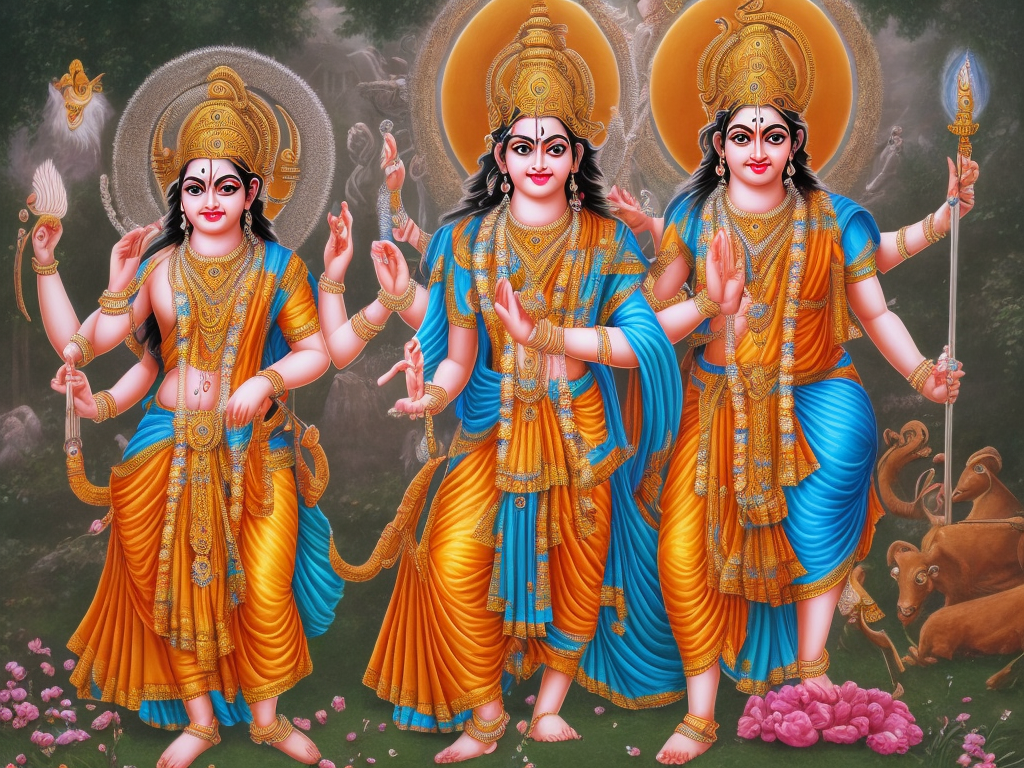
Navami is the ninth day of the Hindu lunar calendar, which is most commonly celebrated twice a year- in the months of Chaitra and Ashwin. Both the Navami of Chaitra and Ashwin hold great importance within the Hindu religion and are celebrated with much fervor and enthusiasm. However, there are some key differences between Ram Navami and Durga Navami, which distinguish them from each other.
Ram Navami:
Ram Navami, as the name suggests, is the birthday of Lord Ram, the seventh incarnation of Lord Vishnu. It falls on the ninth day of the Hindu calendar in the month of Chaitra, which usually falls in the months of March-April. Lord Ram is considered to be a perfect human being, possessing all the qualities of an ideal son, husband, brother, and king. He is considered a deity of great significance and is worshipped by millions of Hindus all across the globe.
Ram Navami celebrations commence with devotees observing fasts, reading holy scriptures like the Ramayana, and organizing bhajans and kirtans in praise of Lord Ram. A common tradition during this festival is the Kalyanotsavam, which is a reenactment of Lord Ram’s wedding with Goddess Sita. People adorn the idols of Lord Ram with new clothes and jewelry, prepare delicious feasts, and distribute prasadam to the devotees.
The significance of Ram Navami isn’t just limited to Lord Ram’s birth. It also highlights the significance of good over evil. Lord Ram is an embodiment of virtue and righteousness, and his actions are a testament to the fact that good always triumphs over evil, no matter how powerful the evil may be. Hence, the celebration of Ram Navami serves as a reminder to the devotees to walk on the path of righteousness and spread positivity and love.
Durga Navami:
Durga Navami, also known as Maha Navami, is celebrated on the ninth day of Navratri, which falls in the month of Ashwin or October. It marks the end of the nine-day-long Navratri festival, which is celebrated in honor of Goddess Durga- the mother goddess. The festival symbolizes the victory of good over evil, with the goddess emerging victorious over the demon Mahishasura. It is believed that during these nine days, the goddess descends from the heavens and blesses the earth with her divine presence.
The festivities of Durga Navami are marked by elaborate puja rituals, devoted towards Goddess Durga. Special offerings are made to the goddess, such as fresh fruits, flowers, and sweets, and devotees chant mantras in her praise throughout the day. Another tradition during Durga Navami is the Ashtami Homa, which is a homa (fire sacrifice) that is conducted to attain blessings from the goddess.
The significance of Durga Navami is not limited to just triumph over evil. It also represents female power and the ultimate sacrifice. It is believed that the goddess Durga embodies all the female energies of the universe, and her manifestation in a feminine form is a testament to the power of women in our society. Additionally, the festival also represents the struggle of the goddess, who had to make the ultimate sacrifice to vanquish Mahishasura.
Differences between Ram Navami and Durga Navami:
While both Ram Navami and Durga Navami celebrate the triumph of good over evil, there are some key differences between the two festivals. Firstly, Ram Navami marks the birth of Lord Ram, who is considered to be an ideal human being, while Durga Navami marks the end of the Navratri festival, which celebrates the ultimate triumph of the goddess Durga over the demon Mahishasura.
Another key difference between the two festivals is the focus on masculinity versus femininity. While Ram Navami focuses on the story of Lord Ram, a male deity, Durga Navami is dedicated to the goddess Durga, who is a symbol of female power and strength. Both festivals highlight the importance of celebrating positivity and righteousness, but they do so by different means.
Lastly, the rituals and traditions associated with the two festivals are vastly different from each other. Ram Navami is marked by people organizing bhajans and kirtans and adorning idols of Lord Ram with new clothes and jewelry, while Durga Navami is marked by elaborate pujas and offerings made to the goddess Durga.
Conclusion:
In conclusion, both Ram Navami and Durga Navami hold great significance within the Hindu religion and are celebrated with much enthusiasm and devotion. These festivals celebrate the triumph of good over evil and serve as a reminder to people to follow the path of righteousness and spread positivity in their lives. While there are some differences between the two festivals, they are both equally important in their own right and continue to be celebrated with much fervor by devotees all over the world.
 Self-Instruct
Self-Instruct